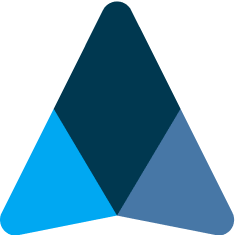3. Customer Segmentation
What it is
This step is about breaking down the market into coherent segments and analyzing each segment's characteristics, needs and potential.
How to do it
First, choose a sensible basis for segmentation. Common ways to segment include:
- Demographic or Firmographic: e.g., by age, income, industry, company size.
- Behavioral: e.g., high-frequency users vs. occasional users; loyalists vs. switchers.
- Needs-based or Psychographic: e.g., customers focused on low price vs. those seeking quality; different use cases or jobs-to-be-done.
McKinsey often favors needs-based segmentation, as it directly ties to what drives purchasing decisions. For instance, in a B2B software market, segments might be "automation-focused adopters" vs "compliance-driven buyers" which speaks to their primary need/motivation. In consumer markets, you might identify segments by lifestyle or attitude (e.g., "tech-savvy early adopters" vs "value-conscious shoppers"). The key is that each segment is actionable, meaning you can take a specific action (such as tailoring marketing or product features) to serve that group better.
Once segments are defined, profile each one:
- Size & Importance: How big is the segment (in population or revenue)? Is it growing? Which segments contribute most to current market value vs. future growth?
- Customer Profile: Who are they? Develop a persona or description. What are their typical demographics or firmographics?
- Needs & Preferences: What does this segment value most? Is it price, convenience, quality, brand status, innovation, etc.? What pain points do they have that are not being fully met?
- Buying Behavior: How do they typically find information and make purchase decisions? (This links to the customer journey block later.) Do they buy through specific channels? How loyal are they?
- Current Satisfaction & Gaps: Are they well-served by existing offerings, or is there dissatisfaction?
Tools & Frameworks
You might use the STP model (Segmentation-Targeting-Positioning) to structure the thought process: segment the market, identify which segments to target, and consider how to position for them.
If data permits, cluster analysis or surveys can provide evidence for distinct segments (consultants love to include a chart of survey results showing, say, 3 clusters of customers with different priorities). Creating personas (fictional but research-grounded representations of segment archetypes) can also be useful for communicating who the segments are. Another tool is a simple table, with segments as rows and columns for the attributes above (needs, size, etc.), allowing for side-by-side comparison.
Key questions to answer
- What are the main customer segments in this market, and how do we define them?
- How large and fast-growing is each segment? (Prioritize which segments matter.)
- What does each segment need or value? What problems are they trying to solve?
- How are customers in this segment currently served – are they satisfied, or is there unmet demand?
- Which segment(s) should we focus on, and why? (This crosses into strategy – e.g., you might conclude that Segment A is high value and aligned with our strengths, so it's the priority.)
Signs of success
A strong segmentation will illuminate strategic choices. You know you've done it well if stakeholders start saying things like, "Wow, Segment X is where the profit is, but we've been too focused on Segment Y," or "We need a different approach to win Segment Z based on these insights." In other words, the segmentation leads to an "aha!" about where to play or how to tailor offerings. Also, each segment profile should feel like a real, distinct group – if the differences between segments are fuzzy or trivial, you may need to refine your definitions.

















